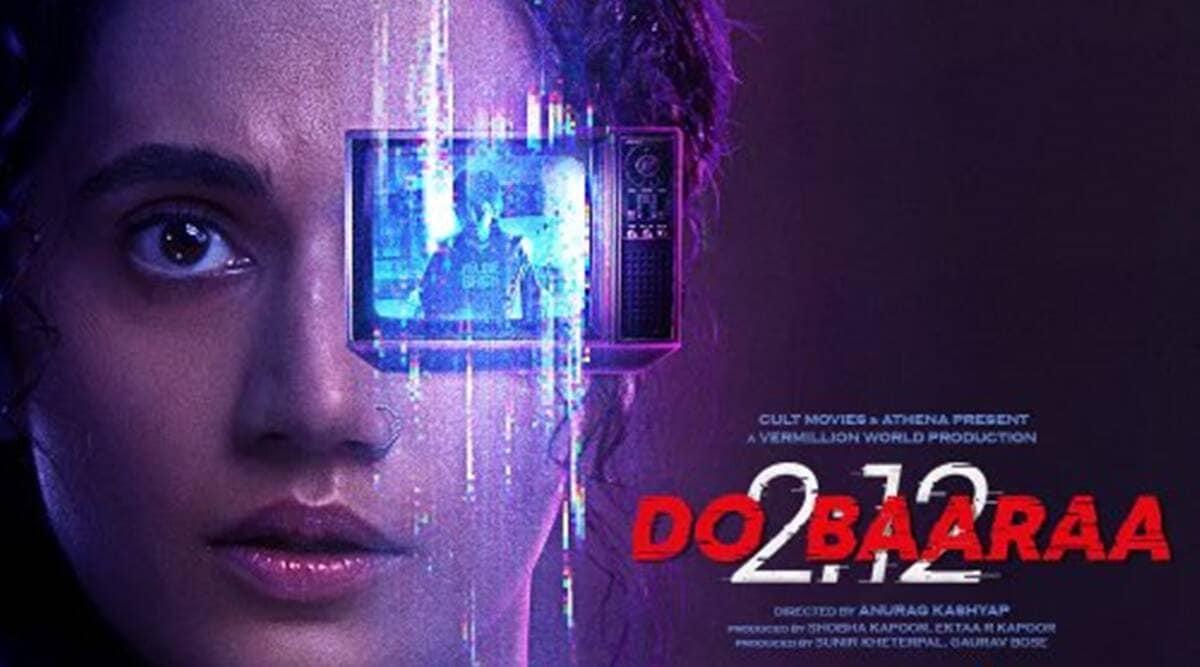 What makes Dobaaraa different from his other films is perhaps its precision in sticking to what is needed for the story to remain together – this is aided by Aarti Bajaj’s skilful editing. It has a less indulgent style than Anurag Kashyap's previous films.
What makes Dobaaraa different from his other films is perhaps its precision in sticking to what is needed for the story to remain together – this is aided by Aarti Bajaj’s skilful editing. It has a less indulgent style than Anurag Kashyap's previous films.Dobaaraa, Anurag Kashyap’s latest, is a time travel film that is just a time travel film. Based on the Spanish film Mirage, it has no pretensions to be something more and derives its logic from within the fantasy of its reel-life world. At its heart is a question that haunts many of us, perhaps even more after the Covid-19 pandemic: What if we were living a different life? In Dobaaraa, this question becomes: What if we did have another life in another place? What would we choose and why?
Dobaaraa is also about choices. As the film’s protagonist Antara discovers, her one action has the power to change the trajectory of lives, hers and others. She can change her past and therefore her present. It helps that the character is articulate, making it easier for us to follow the plot which she often explains herself. There is a hint of an existential quest here. Antara’s questions have some degree of poignancy: What can she do if what appears real to her does not match up to others’ idea of reality? Ironically, Dobaaraa spends more time in the reality Antara does not want to live in, rather than the one she wants to get back to.
There is another choice involved here: That of Kashyap’s to make this film. What makes Dobaaraa different from his other films is perhaps its precision in sticking to what is needed for the story to remain together – this is aided by Aarti Bajaj’s skillful editing. It has a less indulgent style than his previous films. Like its self-aware protagonist, the film knows what it is not and does not try to be more. There is none of the disturbing starkness of Ugly even when some plot points (a missing child, for instance) could have been similar. A natural response to the film could be that it does not feel like that of Kashyap’s. And yet if we look at his career trajectory in the last few years, Kashyap seems to be moving towards a film-making style that excels in such plots. His last few films, Bombay Velvet, Raman Raghav 2.0, Mukkabaaz, Manmarziyaan, Choked, show Kashyap’s versatility, much like his contemporary Dibakar Banerjee. Where he is not-so versatile is in the arc of his female characters — once trapped in the uni-dimensionality of being sexually provocative, they now seem to portray hurriedly written stereotypes.
The traditional way of thinking about cinema focuses on the director as the sole author of the film – the auteur. This has come under criticism not least because it prevents us from paying attention to the range of people whose craft and labour go into the film’s making. The careers of filmmakers like Kashyap compel us to think about this collaborative nature of film-making even as their own talent is evident.
Subscriber Only Stories
Kashyap seems to know how to work well with the talent of others, including actors who he uses brilliantly. Even his most commercially popular film, Gangs of Wasseypur, is often seen as one that began with a story idea “given” to him by a writer. The film gave music composer Sneha Khanwalkar freedom to develop her own style — one that worked for the film. Dev D was Abhay Deol’s idea. Another of Kashyap’s “different” films, That Girl in Yellow Boots was Kalki Koechlin’s script, the more recent Manmarziyaan was written by Kanika Dhillon. Dobaaraa too is based on Mirage. These films seem to reflect a meaningful coming together of diverse talents. Dobaaraa relies on the skill of its editor Aarti Bajaj and the earnestness in Taapsee Pannu’s acting. It underplays the director’s own voice.
Some years ago, in a class, while discussing film auteurs, we saw a clip from an H&M advertisement directed by Wes Anderson. As I waited for the students’ reactions, I found that even those who did not know it was directed by Anderson, could easily guess it was him. It is clear that certain directors have their own peculiar style irrespective of who they work with – this is an example of the director being the centre of the film. But what we also discussed that day was that the advertising company had probably hired Anderson only so that he would make the film in his quirky, eccentric style — had he experimented, the advertisement may not have worked.
Viewed from this perspective, a trademark style may not always be a creative choice. It can easily become an exercise in brand making, a limiting process that does not like exploration or change. It seems Kashyap’s career is rescuing him from this burden. So when Dobaaraa does not feel like an Anurag Kashyap film, perhaps that is its strength. We can choose to be someone else if we want to — one of those myths that is the promise of cinema anyway.
Aakshi Magazine, a writer based in Delhi, teaches film studies at Ashoka University and has recently co-edited ‘ReFocus:The Films of Zoya Akhtar’